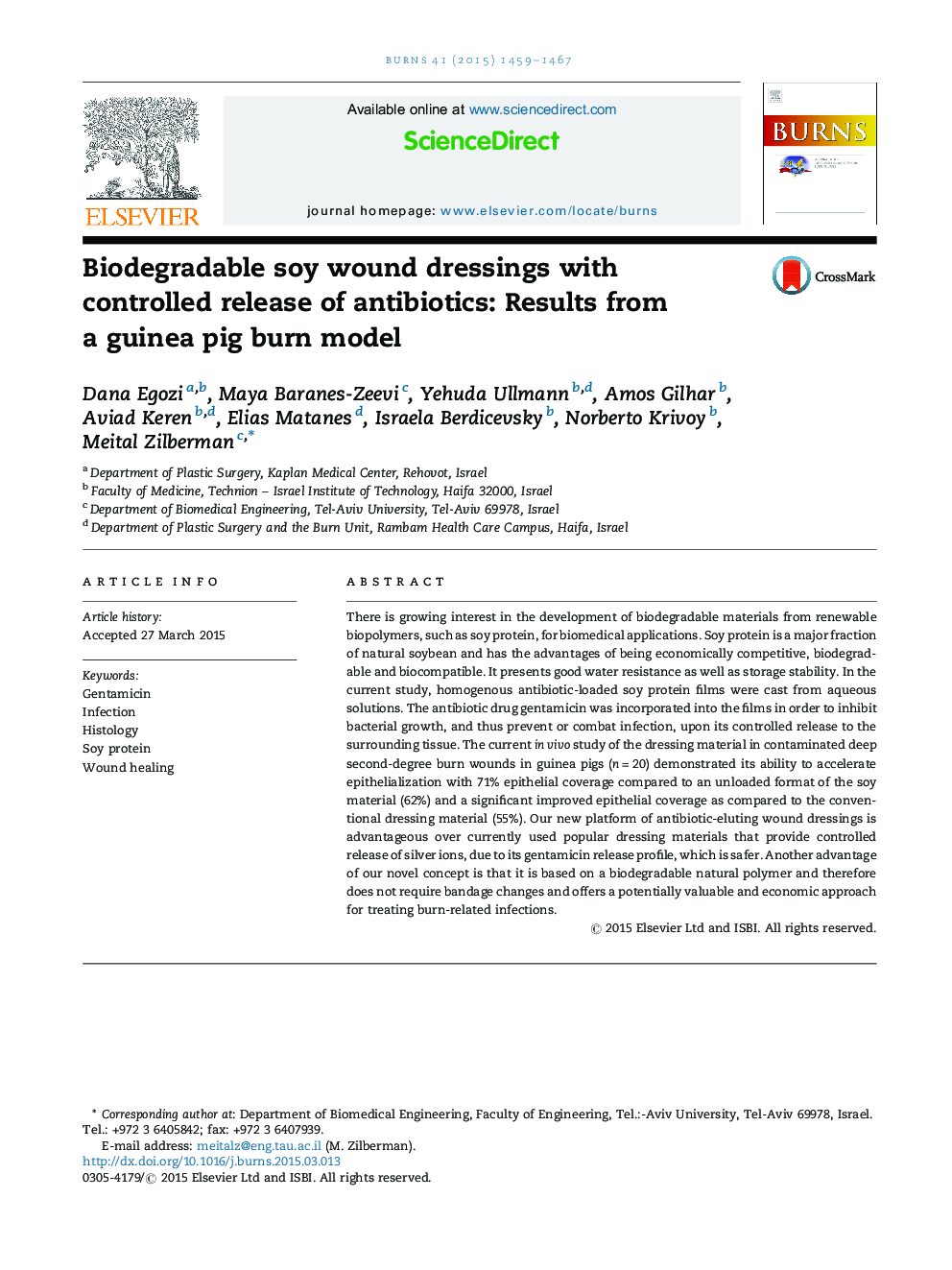| Article ID | Journal | Published Year | Pages | File Type |
|---|---|---|---|---|
| 3104252 | Burns | 2015 | 9 Pages |
•This is an in vivo evaluation of gentamicin-eluting soy protein dressing material.•It was tested in contaminated deep second-degree burn wounds in guinea pigs (n = 20).•Our new wound dressing shows promising results in terms of wound healing and wound contraction.•It demonstrated its advantage over the other investigated dressings.
There is growing interest in the development of biodegradable materials from renewable biopolymers, such as soy protein, for biomedical applications. Soy protein is a major fraction of natural soybean and has the advantages of being economically competitive, biodegradable and biocompatible. It presents good water resistance as well as storage stability. In the current study, homogenous antibiotic-loaded soy protein films were cast from aqueous solutions. The antibiotic drug gentamicin was incorporated into the films in order to inhibit bacterial growth, and thus prevent or combat infection, upon its controlled release to the surrounding tissue. The current in vivo study of the dressing material in contaminated deep second-degree burn wounds in guinea pigs (n = 20) demonstrated its ability to accelerate epithelialization with 71% epithelial coverage compared to an unloaded format of the soy material (62%) and a significant improved epithelial coverage as compared to the conventional dressing material (55%). Our new platform of antibiotic-eluting wound dressings is advantageous over currently used popular dressing materials that provide controlled release of silver ions, due to its gentamicin release profile, which is safer. Another advantage of our novel concept is that it is based on a biodegradable natural polymer and therefore does not require bandage changes and offers a potentially valuable and economic approach for treating burn-related infections.
